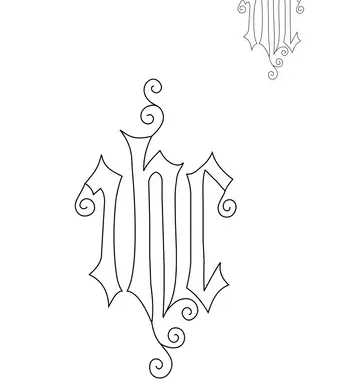
This vintage Ecclesiastical Hand Embroidery Design, originating from a Boston monastery over 100 years ago, still bears the pounce powder from its original use. The intricately perforated design on thin tracing vellum paper is tiny—merely 2 to 3 inches in size. The IHC hand embroidery is elegantly simple and clean, sparking ideas for stitching options. Considerations include a trailing stitch for the outline with a seed stitch filling or even a straightforward split stitch outline.
Like this:
Like Loading...
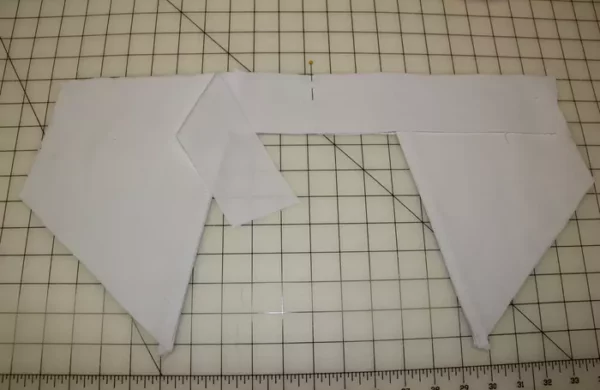
There are many styles of surplices worn by clergy. The most common styles are a round neck surplice and a square neck surplice which is often referred to as a Roman Surplice.
Like this:
Like Loading...
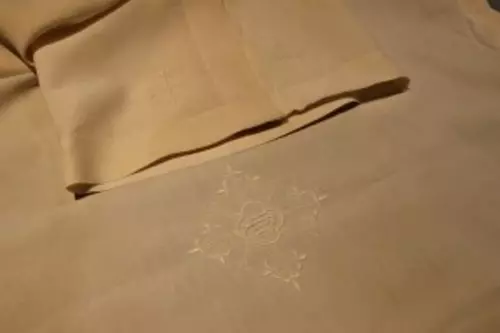
This antique Fair Linen, while stained, and scorched, with holes from a too-hot iron on one end, features a lovely hand-embroidered IHC motif in the center of the Altar Linen, surrounded by four smaller cross designs for the corners. Worked completely in white threads, the Ecclesiastical Embroidery is still lovely amid the linen stains of age. The central hand embroidery design is relatively small, considering the Fair Linen is wide and long
Like this:
Like Loading...

This stole is intended for use during an installation. The components consist of an applique of a Sword and a Bible. The machine embroidered applique and the lower orphrey were placed on a silk dupioni stole using a red and gold galloon trim to finish off the raw edges. While the red of the applique is a slightly darker color than the red of the stole, the gold trim bridges the color gap, and the colors blend together nicely, creating a subtle gradation.
Like this:
Like Loading...

The books consist of a set of six titles published by the Embroiderer’s Guild back in the 1950s and 1960s and following. Each book in the series covers a set of topics such as Canvas Work, Vestments, and so on. The books are small but contain useful information. They are easy to use, as their size limits extraneous details.
Like this:
Like Loading...

Lace, and variations is often applied to the hemline and sleeves of vestments such as a rochet which forms part of the choir robes. The lace can vary with styles of pattern, and materials, being sometimes a little heavier and bolder, to being something very light and airy.
Like this:
Like Loading...
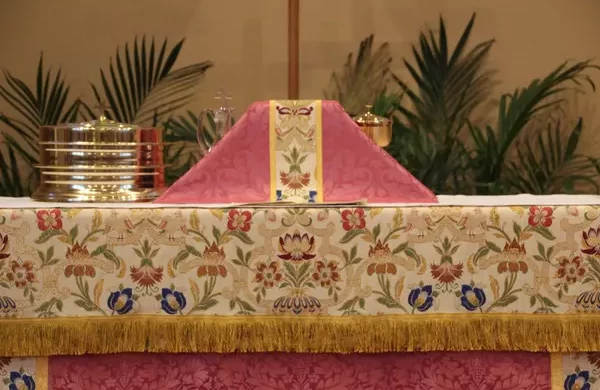
Chalice veils are very simple to construct. The beauty of the finished piece lies in excellent workmanship construction techniques and appropriate design placement. The design of a chalice veil can be as simple or elaborate as the imagination allows. Although the chalice veils do not have any trim around the edge, it is appropriate to use a cord as a decorative finish at the seam. Chalice veils often have a cross motif placed on the front edge too.
Like this:
Like Loading...

The orphrey trim for the chalice veil had been planned and cut to size and position based on the use of the black Passion Cross. The idea was to place the black motif on a gold motif so it would be more visible. The center of the orphrey was located and matched to the center of the design on the black Fairford Fabric.
Like this:
Like Loading...

Merge three vintage Ecclesiastical Embroidery Designs into a versatile artwork. The simple lines make it ideal for whitework, but it seamlessly transitions for gold and silk Ecclesiastical Embroidery. For whitework, consider stitches like stem stitch, outline stitch, and padded satin stitch for letters. Alternatively, use outline stitch with seed stitch fill. Chainstitch is another excellent choice for whitework in Ecclesiastical Embroidery.
Like this:
Like Loading...
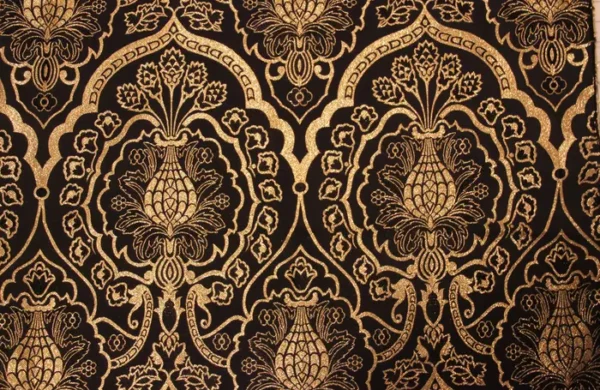
Ecclesiastical Brocatelle fabric for the Ash Wednesday and Good Friday Vestment set has a pattern repeat. But not a tiny, regular pattern repeat. It is a whopping 17″ pattern repeat. There is a tiny arrow at the point or peak of the gold border which is an Ogee pattern. This fabric also has a pattern repeated on the width which is easily determined by measuring the distance between the two black dots located at the base of the gold frame.
Like this:
Like Loading...
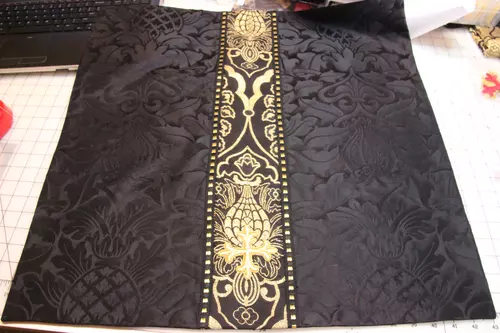
Making the Chalice Veil – a simple item to make is a chalice veil. The dimensions of the chalice veil can vary. The size used for my church is 24″ square. To keep the project simple, a plain fabric can be selected, But for now lets take a look pattern designs in the Fairford, there are two main motifs: the Pineapple and the Ogee. The pineapple motif was selected as the central motif on this chalice veil. The two crossed pins mark the center of the pineapple. The pattern design in Fairford makes it easy to match the same motif point to obtain straight and even lines for cutting.
Like this:
Like Loading...
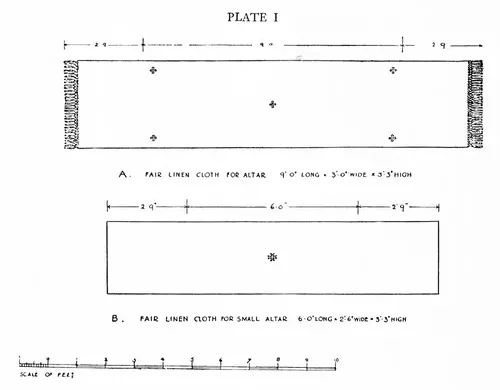
Fair linens, the top linen placed on the altar, are crucial liturgical items. According to Percy Dearmer, a renowned liturgical furnishing author, fair linens should be the exact width of the altar and extend within six inches from the ground on the sides. The linen should be good quality, hemmed, and bear one, four, or five devices in white, red, or blue. Modern recommendations suggest the fair linen’s length should match the superfrontal’s, often 9 to 12 inches. Working with 100% linen, mitering corners, and adding crosses can create a durable, elegant fair linen for the altar.
Like this:
Like Loading...
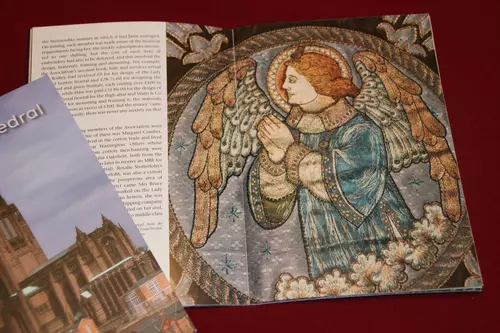
“The Embroideries at Liverpool” book talks about how people made beautiful embroideries for Liverpool Cathedral. A group of ladies had the idea to use one designer for all the embroideries, making them match the building. The book shares the story of these women who not only created amazing embroideries but also helped with the money for the projects.
Like this:
Like Loading...
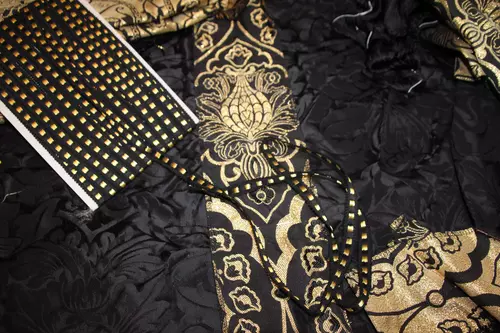
The Passion Cross – Church Symbolism by F.R. Webber
– This is a cross whose ends are cut to points. It is also known as the Cross Urdee, and the Cross Champain, sometimes the Cross Pointed. It represents the sufferings of our Lord and has been called by some authorities the Cross of Suffering. If pictured as rising out of a chalice, it represents our Lord’s agony in the Garden of Gethsemane. It may be used as a symbol of Maundy Thursday, or of Good Friday.
Like this:
Like Loading...

Book written by Marike van Roon, Head Curator at Amsterdam University as her dissertation was added to my library last summer and has become a favorite. Beginning at around the 1800s, the book lays out the history of European Ecclesiastical History through the 1960s. There is a nice mix of primary source material in the form of sketches and illustrations from texts and authors of the period, while stunning black and white, and color photography of actual vestments pieces
Like this:
Like Loading...
















You must be logged in to post a comment.